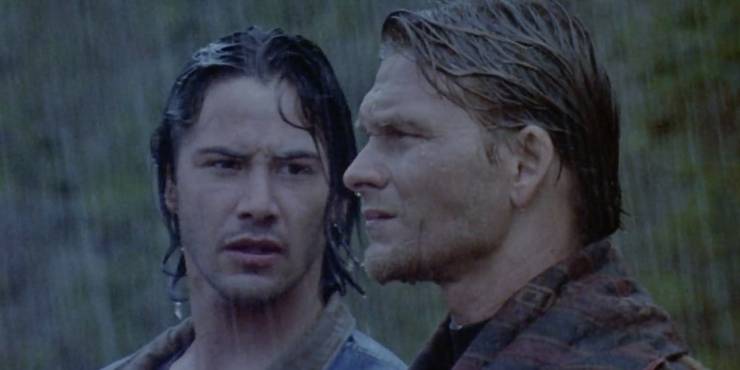The Fast And The Furious’ 20th Anniversary: 20 Things You Didn’t Know About The Film

Given the fact that the Fast and Furious franchise has grown into one of the biggest blockbuster series of all time, it is strange to look back on the first movie as the one that started it all. The Fast and the Furious took audiences into the world of street racing, introduced key characters that would lead the franchise, and establish the underlining story of family.
Even wilder, The Fast and the Furious has recently celebrated its 20th anniversary of release. With such a milestone passed and the series heading into its final lap, it seems like a good time to look into some of the little-known facts about this first movie.
20 The Movie Began As An Article

It’s always interesting to see the origins of popular movies and The Fast and the Furious has a surprising one. In the movie’s director commentary, director Rob Cohen explained that he was first given an article on street racing and asked about making a movie out of it.
Cohen initially didn’t see an entire movie set in this world. However, after attending an actual illegal street racing event and seeing the culture it created, he quickly changed his mind.
19 The Title Was Taken

While the franchise has since come up with all sorts of creative and silly ways to rework the title for the many sequels, The Fast and the Furious remains a pretty ideal title for this first installment. However, when the movie was getting underway, it was discovered that the title was owned by a B-movie from 1955. In the commentary, Cohen explained that Universal traded stock footage to producer Roger Corman in exchange for use of the name.
18 Producers Wanted Timothy Olyphant As Dom

Vin Diesel began his rise as a Hollywood star thanks largely to his breakout role as Dom Toretto in The Fast and the Furious. He made the role into an iconic one and it is hard to imagine anyone else playing Dom. However, producers initially wanted Timothy Olyphant to take the role but he passed. During an interview on Watch What Happens Live, Olyphant insisted he didn’t regret turning it down as it “wasn’t my thing.”
17 Some Interesting Actors Were Considered For Brian O’Conner

The other key lead in the first movie was Brian O’Conner, played by Paul Walker. He ended up leading the franchise along with Diesel until Walker’s tragic death in 2013. And just like with Diesel, it is hard to see anyone else taking the role despite some interesting choices.
The likes of Christian Bale, Mark Wahlberg, and even rapper Eminem were linked to the part at various times before Walker came on board the project.
16 The Romance Between Dom And Letty Was Not In The Original Script

Perhaps the most important relationship throughout all of the Fast and Furious movies has been the one between Dom and Letty. There have been a lot of ups and downs in their romance but it is very much the heart of the later movies especially. Oddly enough, this romance didn’t initially exist in the movie. But Cohen explains in the commentary that it was added after Michelle Rodriguez was cast in order to give her more to do.
15 Some Of The Cast Couldn’t Drive

In order to give a realistic sense of this world revolving around cars, the movie required many of the actors to do their own stunts behind the wheel. Interestingly, certain cast members were not even allowed to legally drive when they were cast in the movie. When talking to Entertainment Tonight, both Jordana Brewster and Michelle Rodriguez admitted to not having their driver’s license until after they got their roles.
14 Ja Rule’s Role Barely Existed At First

It seems to have become a bit of a trend in these movies that a musical artist will make a cameo. And the first one to do so was Ja Rule who had a small role as one of the racers in the first street racing sequence. However, Cohen admitted in the commentary that the role for Ja Rule didn’t really exist by the time he came to set and it was made from him improvising the part along with the rapper.
13 The Movie Was Heavily Inspired By Westerns

Another detail Cohen discussed in the commentary was how so much of the movie was modeled after Western movies. He claimed that he saw Dom as the “fastest gun in the West” character. He also admitted that the opening truck heist sequence was inspired by Stagecoach, one of John Wayne’s most acclaimed movies, with the truck as the stagecoach and the cars as the outlaws on horses.
12 The Speeding Scenes Were Inspired By Star Wars

While the crime aspect of The Fast and the Furious may have been taken from Westerns, Cohen admitted on the commentary track that he had a more specific inspiration for the racing sequences.
He talked about wanting to add a science-fiction element to these scenes, particularly when the drivers initiate the NOS and go into high speeds. He modeled these moments off of the lightspeed sequences from Star Wars.
11 Similarities To Point Break

After so much time, fans may forget that the original plot of the movie revolved around Brian O’Conner as an undercover cop infiltrating Dom’s crew and being accepted into this underground culture. In the commentary, Cohen acknowledges that the plot shares a striking similarity to Point Break as well as the crime movie Donnie Brasco. But he simply praised both movies and insisted it was good to be inspired by the best.
10 The Reasoning For The Undercover Plot

While discussing the first act reveal of Brian being a cop, Cohen also acknowledged on the commentary that some questioned if that storyline was necessary for the movie. However, Cohen felt that the movie couldn’t be sustained by just focusing on the street racing as it was meant to be a movie about the lifestyle of this world rather than the racing itself. The crime story added more excitement to propel the movie.
9 The Editing Style Is Purposely Fast Throughout

While the racing scenes and high-speed heist sequences are obviously the biggest draws in the first movie, Cohen wanted to ensure that the rest of the movie was as gripping as possible. In the commentary, he spoke about wanting the camera to always be in motion and wanting to have a fast editing style so even the scenes of dialogue and exposition felt like a race.
8 The Production Painted Local Houses

In the commentary, Cohen talked about wanting to make the world of the cars and the racing stand out as something truly special amidst the rest of the world around it. In order to do this, the production sometimes went to great lengths.
Cohen said that they asked local houses that would appear in the shots with the cars if they could paint them more muted colors so that the colorful cars would stand out more.
7 The Torture Scene Was Scaled Back

The Fast and Furious movies have grown into huge adventures with plenty of action, but the violence in the first movie is quite tame by comparison. Even so, Cohen pointed out in the commentary that the torture scene in which a man is doused with motor oil was forced to be trimmed down. Cohen explained how important he thought it was that a younger audience be allowed to see the movie and therefore accepted when the MPAA asked to make the scene less intense in order to secure a PG-13 rating.
6 The Fight Between Brian And Vince Was Improvised

One of the conflicts in the movie is between Brian and Vince, a particularly hostile member of Dom’s crew. Their rivalry starts very early as one of the first scenes finds them getting in a brawl. Cohen explained in the commentary that the entire fight was initially choreographed beforehand, but the two actors felt it was unnatural so they decided in the moment to improvise a scrappier fight which ended up being used.
5 Rick Yune Had Issues With Getting Beaten Up

The villain in the first movie was Johnny Tran, played by Rick Yune. As to be expected, the character serves as a rival of Dom and the two come to blows eventually at the desert sequence. In the commentary, Cohen explained that Yune was uncomfortable with his character getting knocked down so easily by Dom as he wanted to put up more of the fight. However, Cohen reasoned that a punch from Vin Diesel would not be easy to walk away from.
4 David Ayer Wrote The Movie’s Most Famous Line

In the commentary, Cohen stressed the particular importance of the scene between Brian and Dom in the garage when Dom talks about his past as a violent criminal. He felt in humanized the anti-hero so the audience could root for him in the end.
And while there were a number of screenwriters who contributed to the script, Cohen singled out David Ayer as the one who came up with the famous line, “I live my life a quarter-mile at a time.”
3 Dom’s Karmic Justice

While Cohen wanted fans to have a connection to Dom and see him as a sympathetic anti-hero, he explained in the commentary that he felt he needed to face some sort of punishment for his crimes. He felt as though Dom’s arc was building to some karmic justice being paid and that came with the final truck heist sequence. Cohen even avoided making the truck driver a distinguishable character as he wanted the truck to seem like a monster of karma.
2 The Stunt Work Of The Final Heist Scene

Unsurprisingly, the sequence Cohen spent the most time talking about on the commentary track was the final truck heist scene. He was sure to express that while all the actors were doing a lot of their own stunts in the scene, there was never a point where they were put in any danger. Cohen expressed that he felt that level of safety being maintained is the art of action filmmaking. He also pointed out that actor Matt Schultz who plays Vince was actually strapped to the front of the truck for the sequence and was made an honorary stuntman at the end of the shoot.
1 Multiple Endings Were Shot

According to Cohen in the commentary, the most discussed and most controversial scene in the movie for the production was the ending in which Brian lets Dom escape arrest. Cohen explained that many of the people involved were unsure if that was the right direction to go in for the ending. While multiple alternate endings were shot, Cohen insisted that he always felt the movie was building to the moment Brian lets Dom go.
About The Author


















